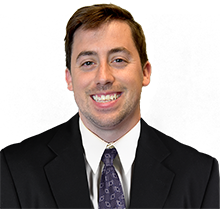
PHYSICS
Mr. Thomas holds a Master of Science degree in Physics from Purdue University and a Bachelor of Science degree in Physics from Manchester University, with a focus in Optics and Parity-Time Symmetry. During his time at Manchester University, he conducted research in computational astrophysics. He developed code that modeled the interior of main sequence stars that could predict the mass, radius and pressure given luminosity and temperature. His model accurately reproduced radiative and convective zones of main sequence starts and mapped the main sequence with accuracy greater the ninety five percent. At Purdue University he gained considerable experience in conducting complex research with semiconductor lasers, experimental design, and day to day lab operations. His work led to the publication of his thesis Injection Current Modulated Parity-Time Symmetry in Coupled Semiconductor Lasers, showing that time delayed Parity-Time Symmetry systems behave semi-classically. While studying at Purdue University he also worked as an Adjunct Professor at Ivy Tech Community College in Indianapolis where he developed pedagogical techniques in teaching math, physics, and astronomy that led to higher student outcomes and placements in advanced programs.
At Wolf, Luke assists product design teams with testing and validation including test equipment design and setup, coding test equipment, and preparing test reports. For Wolf’s Bougie-Integrated Endotracheal Intubation Stylet project, he conducted illuminance tests regarding lighting patterns and output in order to determine optimal positioning for the lighting source and camera placement on the device.
With advanced knowledge of Mechanics, Physics, and Optics, he also performs accident reconstruction and analysis to include incidents occurring in circumstances of reduced visibility. Automotive applications include cars, trucks, trains, motorcycles, bicycles, pedestrians, and watercraft. He is certified in the download of passenger cars and is an FAA-certified remote pilot. He performs visibility and conspicuity analysis focusing on scene content, human vision, both sources of artificial and natural illumination, and visual contrast.